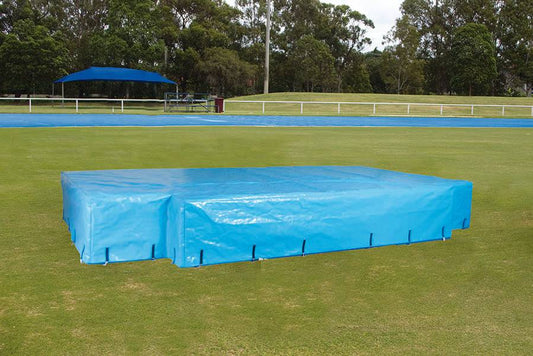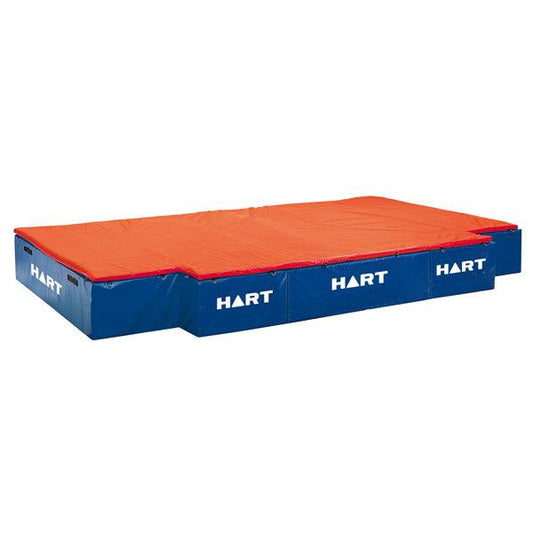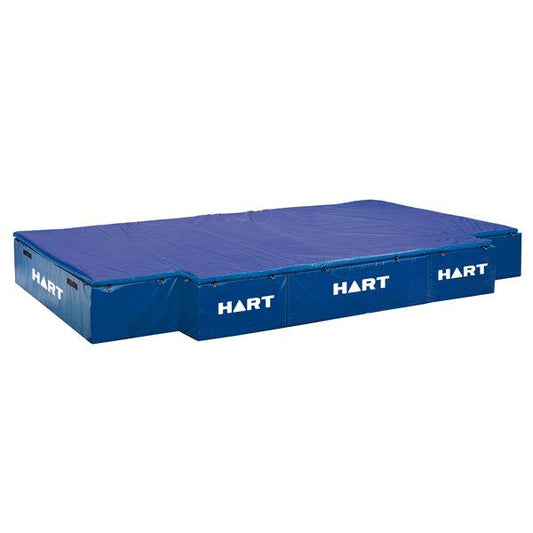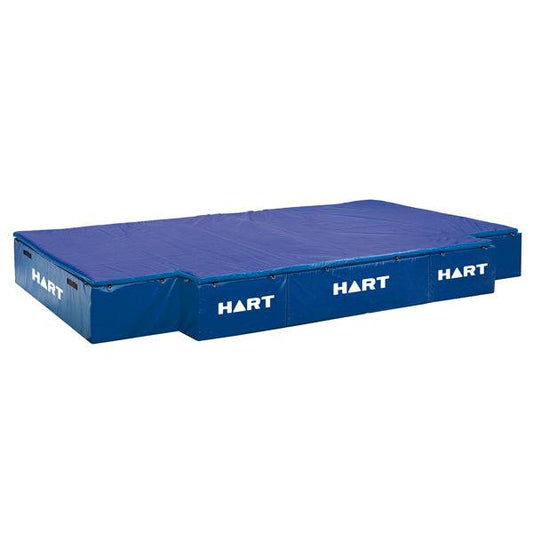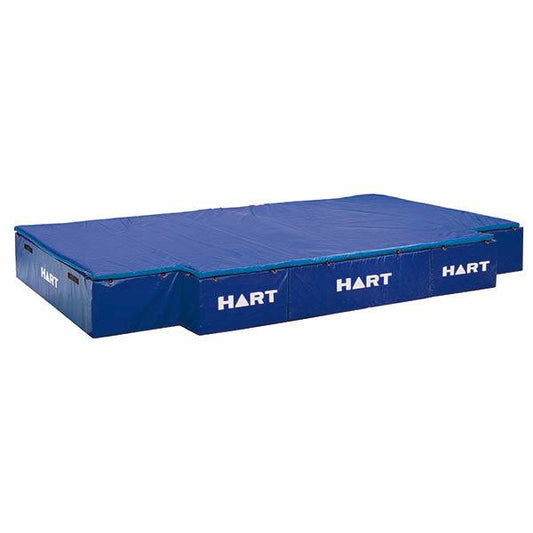HART High Jump Mat Care Guide
With proper care and maintenance, you can ensure your HART High Jump Mats maintain maximum safety, performance, and longevity.This guide outlines the recommended inspection, cleaning, handling, and storage practices for equipment keepers and athletics facility staff.
1. Daily Care Routine
Before Each Use
Visual Inspection:
-
Check the top pad and base units for visible damage, tears, or exposed foam.
-
Ensure the hook-and-loop fasteners are properly aligned and fully secured.
-
Confirm snap hooks are clipped firmly to prevent separation during landing.
-
Verify that the cut-out area is properly aligned under the high jump bar for safe landings.
Surface Cleanliness:
-
Remove debris, mud, or spikes from the surface.
-
Use a soft brush or cloth to remove dirt — never drag the mat to clean it.
After Each Use
Wipe Down:
-
Use a mild soap and water solution and a soft cloth to clean the vinyl cover.
-
Avoid harsh detergents, bleach, or abrasive cleaners as they can damage the vinyl coating.
Dry Completely:
-
Always air-dry the mat before covering or stacking to prevent moisture buildup and mold growth.
2. Weekly & Monthly Checks
Weekly
-
Inspect all hook-and-loop fasteners for fraying or dirt buildup.
-
Clean using a stiff brush to remove lint or debris.
-
Check handles for secure stitching and tearing.
-
Confirm that base units are properly aligned and the mat remains stable during use.
Monthly
-
Check foam compression by pressing on different zones. Uneven firmness or soft spots indicate aging foam that may need replacement.
-
Examine vinyl seams and reinforced corners for wear.
-
Inspect snap hooks and straps for rust or fatigue — replace any corroded metal immediately.
3. Handling and Movement
When Moving Mats - Lift, Don’t Drag!
-
Always lift using the reinforced handles — never drag the mat on rough surfaces.
-
When possible, move each base unit separately to reduce stress on seams and fasteners.
-
Avoid folding or bending the mat, as this can cause foam compression damage or vinyl cracking.
Check out HART Sport High Jump Carts and Trolleys.
4. Storage and Protection
During Use Season
-
Store mats flat in a dry, shaded area away from direct sunlight when not in use.
-
Use a protective cover to prevent dust, UV exposure, and bird droppings if stored outdoors temporarily.
-
Avoid standing water underneath or around the mat — elevate on pallets if necessary.
Off-Season or Long-Term Storage
-
Clean and fully dry before storage.
-
Store horizontally (never on edges) to prevent foam distortion.
-
Keep in a cool, ventilated environment — ideal temperature between 10°C–25°C.
-
Avoid placing heavy objects on top of the mat.
5. Safety & Performance Maintenance
-
Replace top pads every 3–5 years depending on use frequency and wear.
-
Replace foam base units if they show significant loss of rebound, compression, or have absorbed moisture.
-
Always check-in with HART Sport for possibility of replacement parts to maintain performance and safety compliance.
6. Cleaning Products & Materials Recommended
|
Material |
Recommended Cleaning Method |
Avoid |
|
Vinyl Cover |
Mild soap + warm water, soft cloth |
Solvents, bleach, alcohol cleaners |
|
Hook & Loop Fasteners |
Dry brushing |
Soaking in water |
|
Snap Hooks |
Wipe dry after cleaning |
Leaving in damp condition |
|
Foam Interior |
Keep sealed; do not wet |
Removing inner foam unnecessarily |
7. Pro Tips from HART Equipment Experts
-
Rotate top pad orientation every few months for even wear.
-
Record inspection dates in a maintenance log.
-
Use mat trolleys for easier and safer transport.
-
Educate athletes on proper footwear — spikes and dirty shoes shorten mat life.
-
Always dry mats completely after rain before reuse.
With consistent care and inspection, your HART Sport jump mats can deliver safe, consistent performance for 8–10 years or more, ensuring athletes train and compete with confidence.







